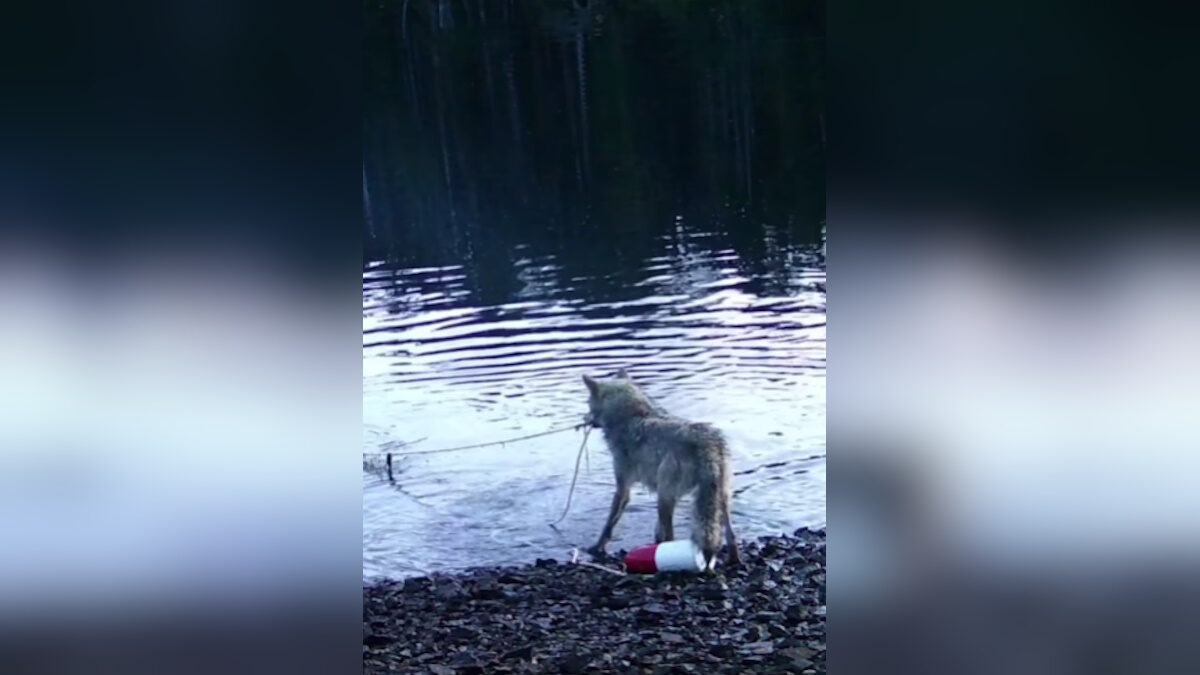Screenshot showing the wolf pulling the crab trap in Canada / Source: Instagram
The images left biologists speechless. On its west side Canadaone wolves she was recorded grasping the rope of a submerged crab trap with her teeth, hauling it up to shore, and then calmly removing the small container containing the bait.
The footage, captured by a field camera in Canada, is described by biologist Kyle Artel, of the State University of New York, as “carefully choreographed” behavior by the wolf: a sequence of staged movements, perfectly controlled and coherent.
According to the researchers, this sophisticated method may be “the first known evidence of tool use by wild wolves.” Their study, published in the journal Ecology and Evolution, sheds light on a mystery: why traps for green crabs—an invasive species—were often found open, moved, or empty of bait in this coastal area.
The mystery was solved thanks to the cameras
Working with the indigenous Heiltsuk community, the researchers initially suspected a marine predator. But cameras installed in the spring of 2024 revealed the real cause. “The wolf saw the buoy, realized it was attached to the trap and knew exactly how to drag it to the beach to find food,” explains Artel, impressed by “the intelligence and complexity” of the behavior.
Experts believe the wolf developed this behavior through trial and error, benefiting from an isolated environment where wolves are less exposed to danger — especially those caused by human presence — and have more time to experiment, explore and problem-solve. An exciting discovery that further expands the known limits of wolves’ cognitive abilities.

